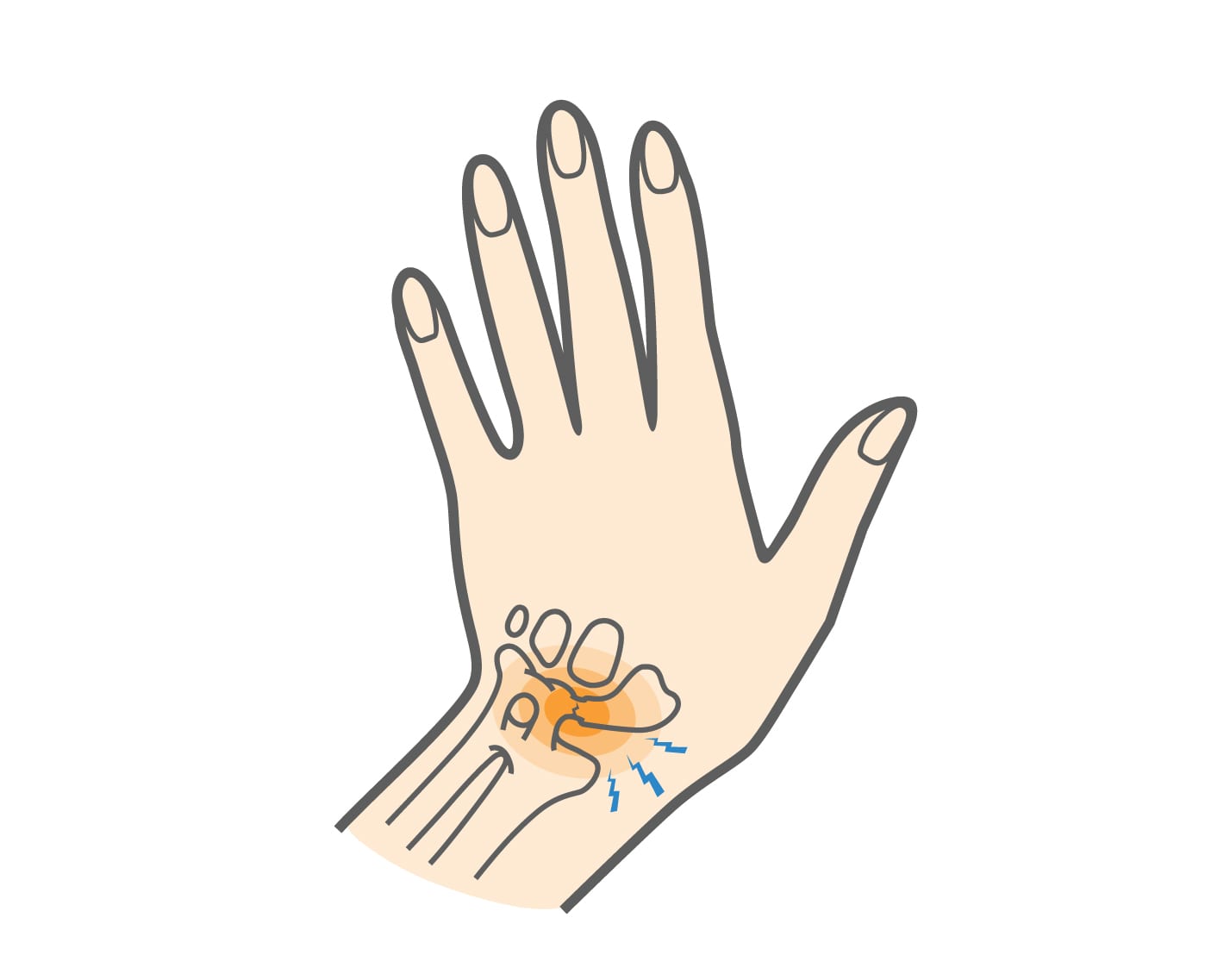The carpal bones are eight small bones in the wrist that connect the forearm bones to the bones of the hand. Connecting the carpals are ligaments, tough bands of fibrous tissue. The scapholunate (SL) ligament connects two important carpal bones: the scaphoid and the lunate. There are two rows of carpal bones: the row closer to the forearm (called the proximal row) and the row closer to the hand (the distal row). The lunate bone is the middle bone in the proximal carpal row. The scaphoid bone is unique in that it is the one carpal bone that spans between the two rows. When weight forcefully impacts an extended wrist, the SL ligament takes the brunt of that force and its fibers may tear. SL ligament tears can occur within a range of severity and symptoms.
Scapholunate (SL) Ligament Tear Causes, Symptoms & Treatment
The carpal bones are eight small bones in the wrist that connect the forearm bones to the bones of the hand. Connecting the carpals are ligaments, tough bands of fibrous tissue. The scapholunate (SL) ligament connects two important carpal bones: the scaphoid and the lunate. There are two rows of carpal bones: the row closer to the forearm (called the proximal row) and the row closer to the hand (the distal row). The lunate bone is the middle bone in the proximal carpal row. The scaphoid bone is unique in that it is the one carpal bone that spans between the two rows. When weight forcefully impacts an extended wrist, the SL ligament takes the brunt of that force and its fibers may tear
Overview
Overview

What causes Scapholunate (SL) Ligament Tear?
SL ligament tears most commonly happen after an athlete lands on their outstretched hand. The force of the impact causes the scaphoid bone to flex forward while the lunate bone bends backwards, causing the SL ligament to tear. SL ligament tears are most common in these sports:
• Football
• Rugby
• Wrestling
Symptoms
Athletes may have damaged their SL ligament if they had an injury to their extended wrist and experience one or more of the following symptoms:
• Wrist pain on the thumb side
• Tenderness to the touch over the wrist on the thumb side
• Weakness when trying to pick up or hold objects
• Bruising
• Swelling
• Difficulty with wrist range of motion, sometimes with popping or clicking (in cases of complete tears)
When to see a doctor
If you have any of the symptoms of a scapholunate ligament tear, you should see your doctor or go to an emergency department as soon as possible after you have injured your wrist. Getting early treatment will increase your chances for a successful outcome. Your doctor will ask about your injury and the sports you play. A physical examination will look for signs of injury such as swelling, bruising, and tenderness. Your doctor will also conduct mobility tests to see if the range of motion of your wrist has been affected. Your doctor will also order x-rays to see if the carpals have been fractured. Other imaging tests, such as a magnetic resonance imaging (MRI) test, may be ordered to see the extent of damage to ligaments and other soft tissues in your wrist.
Non-operative treatment
Partial tears of the scapholunate ligament can generally be treated without surgery. Conservative treatment typically involves:
• Wearing a splint or cast for several weeks to immobilize the wrist
• Nonsteroidal anti-inflammatory drugs (NSAIDs), such as ibuprofen and naproxen, for pain relief
• Occupational therapy, after immobilization and healing of the ligament
Try these exercises to help address your condition:
Below is a PDF of the exercise program.
Surgical Treatment
If your SL ligament has completely torn, or a partial tear is not responding well to conservative treatment, your doctor may consider surgery. Surgery may be conducted through a minimally invasive procedure called arthroscopy: Only small incisions are made, and the surgeon looks inside the wrist with a tiny camera to perform the operation. Surgery may be right course of treatment for you, but it’s important to talk with your doctor about associated risks and benefits of the surgical procedure.
Recovery
With or without surgery, athletes can expect to wear a cast for several weeks. During this time, activities that can re-injure the wrist should be avoided, such as carrying heavy loads or playing sports that could place stress on the wrist. After the splint or cast comes off, occupational therapy is often needed to regain the full motion and strength of your wrist. Return to play will depend on the severity of the injury, and make take anywhere from six weeks to three months. Depending on the type of sport, return to play may be gradual and may include immobilization to prevent re-injury.

